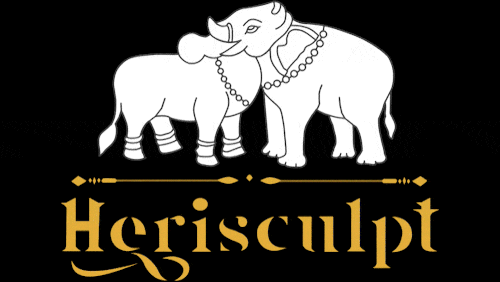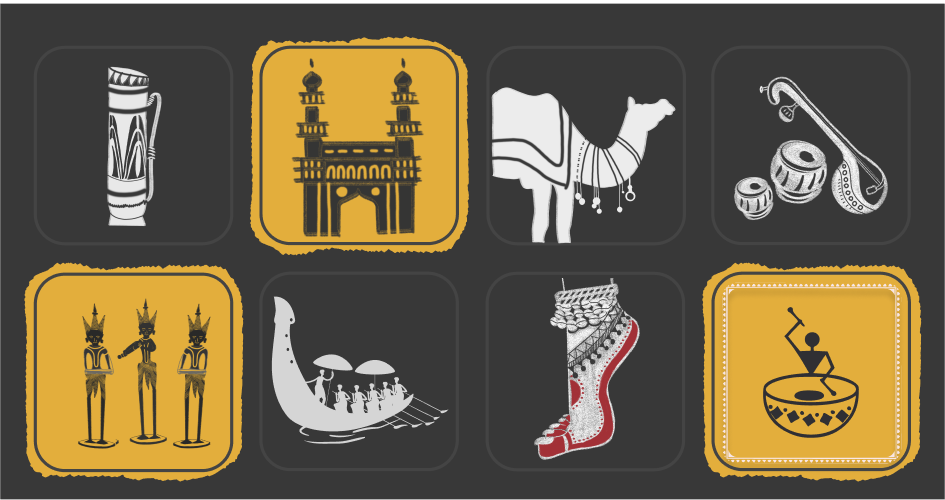The conversing Hanuman: A Reflection of Devotion and Artistry in the 11th Century (Period of chola, 880-1279)
The Chola dynasty, reigning from the 9th to the 13th centuries, is renowned for its monumental contributions to South Indian art, architecture, and culture. Among the myriad of deities revered during this golden age, Conversing Hanuman held a special place, symbolizing devotion, strength, and loyalty. The 11th century, a pinnacle of the Chola period, saw the creation of magnificent temples and sculptures, many of which immortalized Hanuman in stone and bronze, reflecting the cultural and religious ethos of the time.
Chozan style Conversing Hanuman | 11th century hanuman Eco Plastic 8"
Hanuman in Chola Art and Architecture
The Chola rulers were great patrons of art and architecture, commissioning grand temples that were not only places of worship but also cultural hubs. The Brihadeeswarar Temple in Thanjavur, built by Rajaraja Chola I, is a prime example of the architectural grandeur of the period. While primarily dedicated to Lord Shiva, the temple complex and other contemporaneous structures also feature depictions of Hanuman, showcasing the deity's importance across various sects of Hinduism.
Chola artisans were masters of bronze casting, creating lifelike statues that exuded a sense of divinity and realism. The Nataraja bronze, depicting Shiva as the cosmic dancer, is a well-known masterpiece from this era. Similarly, bronze sculptures of Hanuman from the 11th century reflect intricate detailing and expressive craftsmanship. These statues often portray Hanuman in his traditional form, with a muscular physique, holding a mace, and sometimes in a devotional posture with folded hands.
Click here to buy this hanuman idol for home
Hanuman’s Symbolism and Worship During the Chola Period
During the Chola period, Hanuman was venerated not only for his strength and bravery but also for his unwavering devotion to Lord Rama. This era saw a flourishing of the Bhakti movement, which emphasized personal devotion to a deity as a means to spiritual salvation. Hanuman’s role in the Ramayana, as the devoted servant of Rama, resonated deeply with the principles of Bhakti.
Temples dedicated to Hanuman, or those that included shrines to him, were sites of fervent worship. The Cholas, known for their administrative prowess, also supported these religious institutions, ensuring that they were centers of community life. Festivals celebrating Hanuman, such as Hanuman Jayanti, would have been marked by elaborate rituals and processions, bringing together devotees in acts of collective worship.
Explore our collections in idol, Figurines, Artefacts, Monuments
Appearance of conversing Hanuman:
Hanuman, one of the most revered Hindu deities, is celebrated for his bravery, courage, and loyalty as depicted in the Ramayana epic. In this particular artwork, he is shown gesturing obeisance to Rama with his raised left hand while engaging in animated conversation with his Lord. This piece was originally part of an ensemble featuring Rama, Sita, and Lakshmana at its center and was included among a collection of processional icons used in Vaishnava temples in South India during festivals. Reflecting typical Chola-period artistry, Hanuman is depicted in an anthropomorphic form, with only his face and tail indicating his monkey identity. This depiction is considered one of the finest images of Hanuman to have survived from the Chola kingdom, capturing his noble and virtuous character with exceptional sensitivity.
Hanuman’s Cultural Influence
The Chola period was a time of extensive literary activity, with many works composed in Tamil and Sanskrit. The stories of Hanuman from the Ramayana were retold and elaborated upon in local adaptations and versions, emphasizing his virtues and heroic deeds. These literary works, combined with temple inscriptions and sculptures, played a crucial role in disseminating Hanuman’s tales and ensuring his place in the cultural memory of the time.
Visit Us for Unique Artefacts
Legacy and Preservation
The legacy of the Chola period Hanuman is evident in the enduring popularity and reverence of the deity in South India. The exquisite sculptures and temple carvings from the 11th century continue to be admired for their artistic and spiritual significance. These artifacts not only serve as a testament to the skill of Chola artisans but also as enduring symbols of Hanuman’s importance in Hindu worship.
In modern times, efforts to preserve and study these ancient relics have shed light on the sophisticated techniques employed by Chola craftsmen and the profound religious sentiments that inspired their creations. Museums and archaeological sites featuring Chola bronzes and temple architecture attract scholars and devotees alike, offering a glimpse into the rich cultural tapestry of the 11th century.
Conversing about Hanuman during the 11th century Chola period is to engage with a rich tradition of art, devotion, and cultural synthesis. The Cholas’ reverence for Hanuman, manifested through their extraordinary temples and sculptures, underscores the deity’s significant role in their religious and social life. As we admire the enduring beauty of Chola art, we are reminded of Hanuman’s timeless virtues of strength, devotion, and loyalty that continue to inspire and resonate across the centuries.
For more details, please contact us


